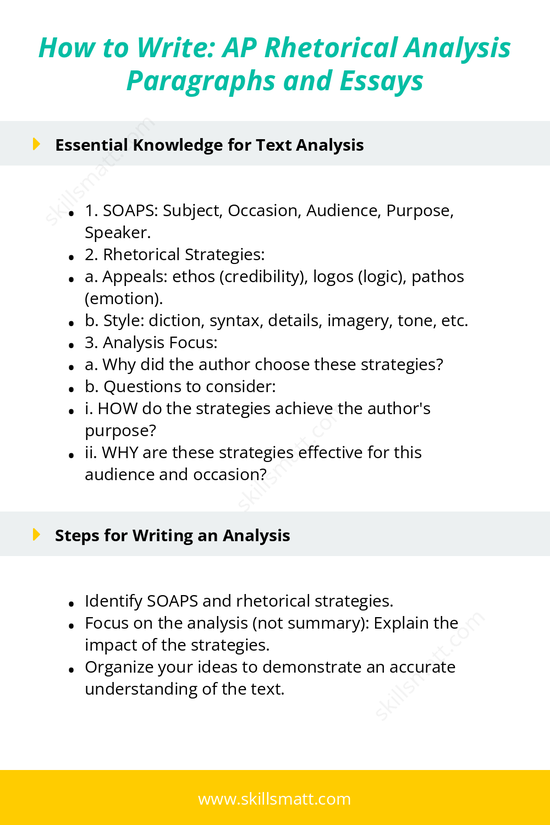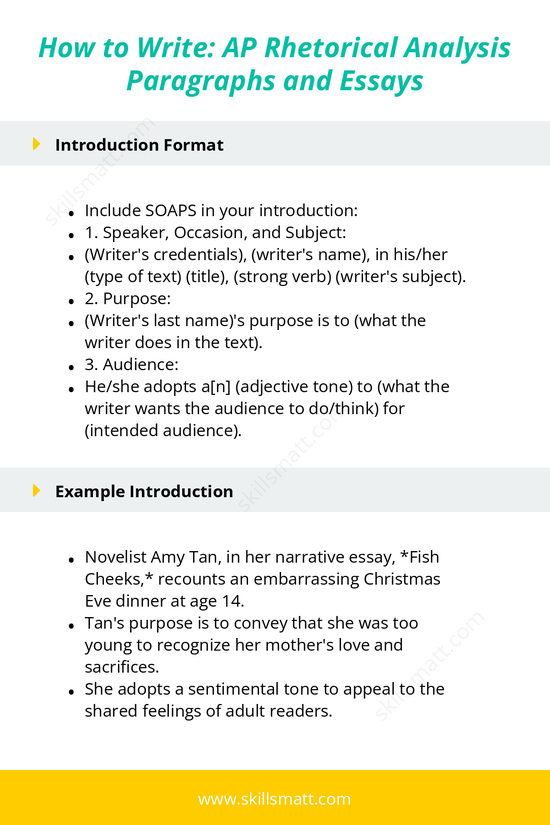How to Write: AP Rhetorical Analysis Paragraphs and Essays
Essential Knowledge for Text Analysis
- 1. SOAPS: Subject, Occasion, Audience, Purpose, Speaker.
- 2. Rhetorical Strategies:
- a. Appeals: ethos (credibility), logos (logic), pathos (emotion).
- b. Style: diction, syntax, details, imagery, tone, etc.
- 3. Analysis Focus:
- a. Why did the author choose these strategies?
- b. Questions to consider:
- i. HOW do the strategies achieve the author's purpose?
- ii. WHY are these strategies effective for this audience and occasion?
Steps for Writing an Analysis
- Identify SOAPS and rhetorical strategies.
- Focus on the analysis (not summary): Explain the impact of the strategies.
- Organize your ideas to demonstrate an accurate understanding of the text.
Introduction Format
- Include SOAPS in your introduction:
- 1. Speaker, Occasion, and Subject:
- (Writer's credentials), (writer's name), in his/her (type of text) (title), (strong verb) (writer's subject).
- 2. Purpose:
- (Writer's last name)'s purpose is to (what the writer does in the text).
- 3. Audience:
- He/she adopts a[n] (adjective tone) to (what the writer wants the audience to do/think) for (intended audience).
Example Introduction
- Novelist Amy Tan, in her narrative essay, *Fish Cheeks,* recounts an embarrassing Christmas Eve dinner at age 14.
- Tan’s purpose is to convey that she was too young to recognize her mother’s love and sacrifices.
- She adopts a sentimental tone to appeal to the shared feelings of adult readers.


